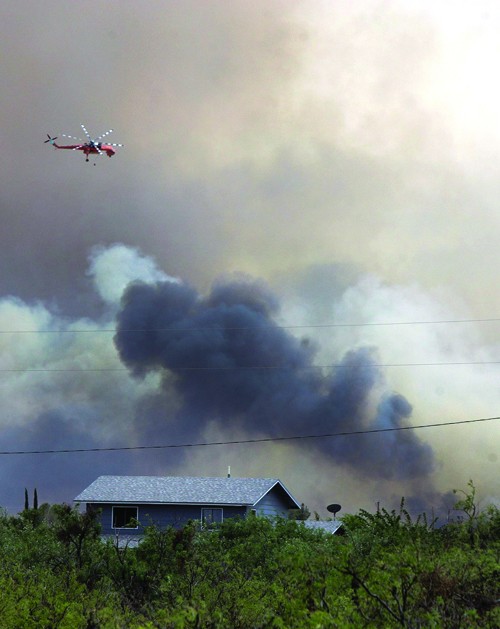While the Wallow Fire in Eastern Arizona is the largest fire in state history, it is not the largest fire in the land’s history.
Large, moderate-severity fires have been part of Southwestern landscapes for hundreds, perhaps thousands of years, said Don Falk, an associate professor in the School of Natural Resources who also researches fire patterns, disturbance interactions and fire-climate relationships in conjunction with the Tree-Ring Lab.
While he said it might seem odd to talk about the lessons of fires that are still raging, Falk said there are already some to be learned about the 2011 fire season.
“”This is probably going to be one of those fire seasons that people talk about for a very long time,”” he said.
Falk said the first lesson is that fires will happen. Fires are an integral component of Southwestern forests and a way that ecosystems redistribute energy, Falk said. The physics and chemistry of forests and climate also make them inevitable, he added.
“”The choice we really are facing … is what kind of fire and when,”” Falk said.
The second lesson is that the 2011 fire season is not a surprise, Falk said. The fires are completely consistent with projections based on climate change.
“”Anybody who was surprised, I would have to say, would be caught asleep at the switch,”” he said.
The third lesson is that fire relates to what Falk calls the “”elephant in the room””: land use.
“”You can meaningfully ask, do we have a fire problem or do we have a land use problem?”” Falk said.
As far as how the monsoon season will be, according to Glen Sampson, the meteorologist in charge at the Tucson office of the National Weather Service, there are factors to indicate both an early monsoon and a later one.
For July, August, and September there is a 50 percent or greater chance that above-average temperatures will occur. As far as precipitation, there is an equal chance of above, below or near average precipitation, Sampson said.
The 2011 fire season has already proven to be one of the most destructive in state history. In addition to the Wallow Fire, which has burned more than 519,000 acres, state fire officials are also battling the Monument Fire, which has caused thousands of evacuations near Sierra Vista, and the Horseshoe 2 Fire, which is burning near the Arizona-New Mexico border.









